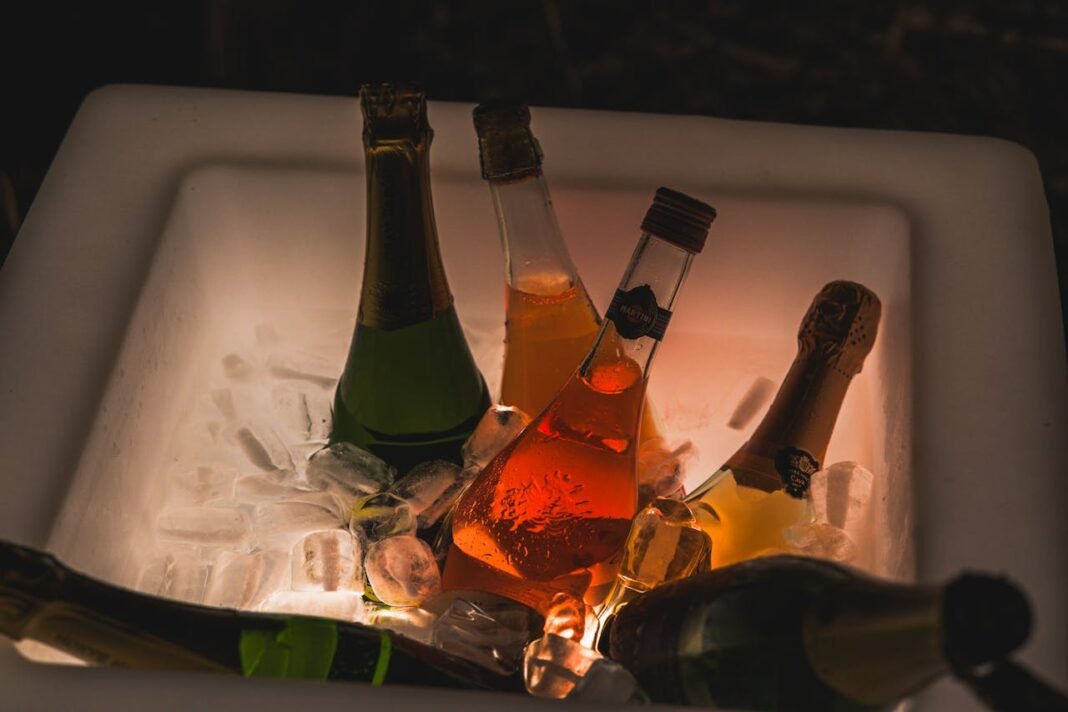Basic Wine Knowledge
What Is Wine?
Doesn’t matter if we work in the food and beverage industry (bar, restaurant, pub, etc) or in other industries; we all have some basic wine knowledge or at least know what wine is, right? Well, let’s presume that most of the people out there have no clue and will go back to basics.
Wine’s basically fermented grape juice that’s gone a little wild. You crush up some grapes, let them hang out with yeast, and the yeast turns all the sugar into alcohol. Boom—wine. There are a bunch of types, like red, white, rosé, and sparkling (the bubbly stuff). Red’s made with dark grapes (skins and all), white’s made without the skins, rosé is kinda in the middle, and sparkling wine has bubbles ’cause it ferments twice.
Taste-wise, wine can be fruity, sweet, dry, or even kinda earthy, depending on the grapes and how it’s aged—sometimes in wooden barrels that give it extra flavor. People drink it with food, at parties, or just to unwind. It’s been around forever—like, thousands of years—and some folks get super into collecting fancy bottles and doing tasting events.
The Process of Making Wine (Step by Step)
Even thought the above words can sounds like pretty complicated steps, we’re going to break it down step by step so you can get some basic wine knowledge without feeling overwhelmed. Whether you’re just curious or planning to impress someone at your bar or restaurant, knowing how wine is made is pretty cool and is never wrong to expand your beverage knowledge!
Step 1: Growing and Harvesting the Grapes

The very first step in the wine-making process is growing the grapes and then harvesting them. As you might guess, wine comes from different types of grapes, but mostly from the species called Vitis vinifera. These grapes are smaller, sweeter, and have thicker skins compared to your average table grapes.
Wine grapes are grown in vineyards. The climate, soil, and even the way the grapes are pruned and cared for affect the taste of the wine. Different regions are known for different types of grapes because the weather and soil make a big difference. This is why wines from places like France, Italy, or California all taste unique!
Grapes are typically harvested in late summer or early fall. Vineyard workers pick the grapes by hand or use machines to do the job. The timing of the harvest is super important because the ripeness of the grapes determines the wine’s flavor, acidity, and sweetness. Getting this right is one of the most crucial parts of basic wine knowledge.
Step 2: Crushing and Pressing

Once the grapes are harvested, it’s time to crush them. Back in the day, people used to stomp on grapes with their feet (imagine that!), but nowadays, most wineries use machines to do the job. Crushing the grapes releases the juice from the skins, and the stems/steams are removed. Then, after the juice is gathered, it is sent for fermentation.
For white wine, the juice is quickly separated from the skins to keep it light and fresh. Red wine, on the other hand, is left to sit with the skins to give it that bold color and rich flavor. The skins also add tannins, which give red wine its distinct texture.
The Different Part Of Grapes:
- The Flesh – This is the juicy inside of the grape, and it’s the most important part for making wine. The flesh contains the juice, which has the flavors, aromas, sugar, and acidity needed to produce wine.
- The Skin – The skin gives red wine its color. When making red wine, the color from the skin mixes with the juice, turning it red. The skin also adds extra flavors to the wine.
- The Seeds/Stems – The seeds aren’t useful for winemaking because they have bitter oils that can make the wine taste bad. Winemakers try not to crush the seeds when making wine.
Step 3: Fermentation

After crushing, the grape juice (called “must”) is placed in fermentation tanks. This is where the magic happens! Yeast is added to the must to start fermentation. Yeast is a tiny organism that eats the sugar in the juice and turns it into alcohol and carbon dioxide.
In case you want to know more about the process of fermentation, which is a key process for all of the alcoholic beverages, have a look here.
Fermentation can take a few days to several weeks, depending on the type of wine being made and the desired flavor. White wines are usually fermented at cooler temperatures, while red wines ferment a bit warmer. Knowing how fermentation works is a key part of basic wine knowledge since it’s where the juice really transforms into wine!
Step 4: Clarification & Stabilization

No one likes cloudy wine, so winemakers work to clarify the wine before bottling. The wine is transferred to a different vessel – oak barrels or stainless-steel vats are the preference of most winemakers. After that, the process of fining and filtration can happen with the wine. Fining is when a substance is added to the wine to make it clearer. Bentonite, a type of volcanic clay, is one of these substances that, when put into the wine, attracts the unwanted particles and brings them to the bottom of the vessel.
Filtration is the other clarification process, where a filter is used to catch the large particles that are in the wine. This involves filtering out any unwanted particles like dead yeast cells or grape skins. Stabilizing the wine ensures it won’t develop unexpected flavors or textures after bottling. This might involve cold stabilization to prevent crystals from forming or adding sulfites to preserve freshness. The wine is later transferred to another barrel or steel vat for future ageing or immediate bottling.
Step 5: Aging the Wine (Maturation)

Once fermentation and clarification are complete, the wine is moved to barrels or tanks to age. Aging wine allows flavors to develop and mellow out. Red wines are often aged in oak barrels, which can give them a smoky, vanilla, or spicy taste. Letting the wine age in wooden barrels is like adding salt and pepper to your food. The fruity flavors of the grapes are seasoned with spicy, toasty, and vanilla flavors from the oak. White wines might be aged in stainless steel tanks to keep them crisp and fresh.
Some wines are aged for just a few months, while others might sit for several years before they’re considered ready. The aging process is another critical part of basic wine knowledge since it greatly affects the final flavor and quality of the wine.
Step 6: Bottling the Wine

Finally, it’s time to bottle the wine! The wine is pumped into bottles, sealed with a cork or screw cap and after that, labeled. Some wines are ready to drink right away, while others might need more time to mature in the bottle. Now that the wine is bottled, it’s ready to hit the shelves. Whether you’re enjoying a crisp white on a sunny afternoon or a bold red with a hearty dinner, knowing the story behind your glass makes it even more special. Having basic wine knowledge helps you appreciate the journey from grape to glass.
Wine-making is a beautiful blend of art and science, and gaining some basic wine knowledge gives you a deeper appreciation for every sip. Whether you’re picking out a bottle for a special occasion, want to grow your beverage knowledge, or are just curious about how your favorite wine is made, understanding the process makes it even more enjoyable!
Different Wine Grapes
To have basic wine knowledge means you should get familiar with some of the main types of wine grapes. Popular ones include Cabernet Sauvignon, Shiraz, Merlot, Pinot Noir, Sauvignon Blanc, and Chardonnay. They might look pretty similar and grow the same way, but they taste totally different. These different types of wine grapes are called varieties.
Grape vines can grow almost anywhere in the world except Antarctica. But just because they can grow doesn’t mean they’ll make good wine. The place where grapes grow really matters. If it’s too cold, the grapes won’t ripen. If it’s too hot, they’ll dry out and turn into raisins.
It’s not just about the type of grape, either — where the grapes are grown makes a big difference in flavor. For example, Chardonnay from South Africa won’t taste the same as Chardonnay from France. That’s why it’s important to know both the type of grape and where the wine comes from.
Some of the images in this article are from Pixabay (not copyrighted and free for commercial use).






